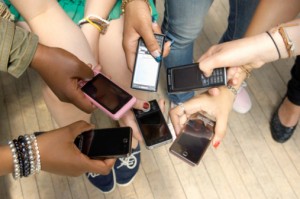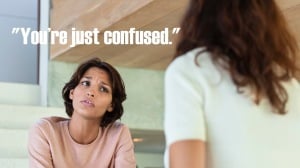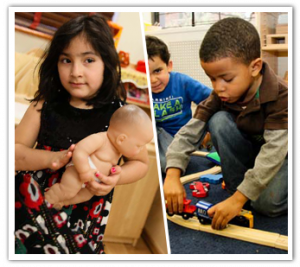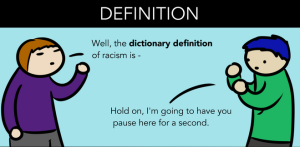
Source: Getty Images
We read an article in Glamour recently on how to look better in photos, and would like to share some of the key points with you, in case you, too, would like to be Glamorous.
“Wear makeup,” the magazine says. A lot of makeup. All kinds of makeup. But not too much makeup! Not enough to give the impression that you’re actually wearing makeup. That is a total faux pas.
“Have a Photoshop-finished face.” That is, you must have no appearance of lines, shadows, oil, or shine. This requires an additional series of products, which, like your make-up, must be applied expertly, yet secretly.
“Cheat the camera.” After creating the perfect face, you must now create the illusion of the perfect body. This is done carefully, body part by body part, bottom to top. Stand sideways, cross your legs, tooch your booty, twist your shoulders, and tilt your head. But look natural!
And the most important trick to remember as you experiment with foundations and face creams and flexed arms: “Definitely don’t stand dead-on.”
Definitely. Don’t. Stand. Dead. On.
Whatever you do, if you want to look good in a photograph, don’t insult the beauty-loving lens of the camera by assaulting it with your actual, dead-on, human appearance.
Just stand and smile? What are you, naïve? What is this, 1990?
No. In today’s photo-sharing tech culture, no one wants to see the shiny, wrinkly, unevenly-toned, upright person that you are. They want to see you cheating, contorting, disguised, concealed.
They want to see you distorted.
They want to see you airbrushed.
And smiling.
As feminists and body image activists, we look at advice like this and scoff. We’re used to it.
We spend every moment in the grocery check-out line peering at magazine headlines through slanted eyes. Hell, we take pictures of the most audacious ones, texting them to our feminist friends with “UGH!” as the caption.
We think, No one would actually do this, right?
But do us a favor. Try something for us. Log into Facebook and scroll down your news feed. Look at the pictures – especially the profile pictures –of anyone in their twenties or younger.
Are you seeing what we’re seeing?
The standing sideways to look skinny. The leaning forward to emphasize cleavage and cover up stomach rolls. The pushed-out butts, pushed-up breasts, hands placed inconspicuously to conceal flaws, make-up expertly applied to look “natural,” faces scrunched up to appear cute and sassy.
It’s all there.
Somehow, these complicated photographic tricks-of-the-trade have trickled down from the upper echelons of the fashion industry and seeped into the minds – and onto the bodies, into the pictures – of our young people.
They’ve become skilled at making their bodies look “good” by making them look… not like natural human bodies.
Photo-shoot beautification work that was once reserved for fashion models is now socially required of every young person of this generation.
Put a few teen girls in front of a camera, and they almost instinctively cross their legs, bend their arms, and tilt their heads in unison, bending to the gaze of the camera as though it’s their oldest friend.
As if they were born to grace Instagram.
As if this is what being young is all about.
We Are Generation Facebook
Today’s Generation F young people spend hours using social media. 95% of teens and 94% of young adults are on the Internet, and are visiting Facebook 172 million times each day. The statistics are staggering, and they are growing.
And unlike other forms of media, social media isn’t just about consuming content. It’s about actively creating content.
Teenagers upload and share a total of 250 million pictures per day.
Young people are experts at posing because they are posing. All the time.
And they are sharing the results with hundreds, even thousands, of people on the Internet.
What’s Wrong with This Pic?
Adolescence is known to be a confusing whirlwind of social pressures, changing bodies, sexual confusion, and debilitating angst.
Thanks to the onslaught of sex hormones at puberty which extend through adolescence, feelings are at an all-time high while self-esteem is often at an all-time low.
And in the midst of this roller coaster of hormones and body changes, you’re starting to work out who you are as an individual and how you fit into a group (yes, there is developmental theory behind cliques).
You’re learning who you are and where you’re going and what you’re meant to be.
I mean, don’t you remember being sixteen?
Now, thanks to Facebook, Instagram, Tumblr, and other social media technologies, today’s young people barely have any time to themselves to process all of these feelings and changes.
They’re never really apart from their peers.
Instead, their lives are constantly on display via status updates, tweets, and photo-sharing, and their peers’ lives, influential opinions, and appearances are just one click away.
Every time a teenager leaves their house, in each of their friends’ hands is a device that could snap their photo at any moment and put it on display for hundreds upon hundreds of people – instantaneously.
And since young people are already programmed, thanks to hormones and compounded by media saturation, to think about their appearances constantly, this creates the perfect environment for the kinds of obsessions with beauty, weight, and perfection that feminists and body image activists have worked for decades to eradicate.
#theperfectstorm #feminightmare #awhellno
As teens regularly practice altering themselves visually and virtually, they swap realities.
You aren’t you. You are who you appear to be on everyone else’s computer screens.
You start to define yourself by how you appear in pictures, and this appearance is almost entirely under your control, if you know the right tricks.
And this is not a totally-creepy-mind-fuck-sci-fi-thriller premise. This is real life.
Bend, bend, bend. Pose, pose, pose. Edit, edit, edit.
Like me, like me, “Like” me!
The Truth Is in the Alterations
The problem isn’t just that teens are altering photos. (Katy’s current profile picture is a photo-shopped version of her as a zombie that she very much likes, thankyouverymuch). The problem is how they are altering photos.
For young women – surprise, surprise! –the vast majority of photo-posing tricks are meant to make you look slimmer.
There are articles upon articles that actually teach such techniques.
Hands on your hips, slimmer arms. Turning your body to the side, narrower hips. Knees turned in, smaller waist. Chin forward, skinnier neck. Hunched shoulders, smaller bust. Head up, smaller forehead.
Can you even keep track of all the ways that you’re fat?
Girls, your foreheads are fat.
Try to imagine someone turned to the side, hands on their hips, knees turned inwards, chin pushed forward, head facing upwards, with their shoulders hunched. Are you picturing Gollum, too?! Or maybe it looks more like this. Or this.
She may look mangled – the modeling term is “broken-down doll” – but she sure does look thin!
So, while the focus on appearance and presentation is a reality for all teens, it’s important to note that it is a highly gendered phenomenon that illuminates very traditional, very harmful ideas about bodies.
If you’re a girl, it’s all about minimizing yourself.
Boys stand dead-on. They stand dead-on with their shirts pulled up and abs flexed, with a girl on each arm, and a red Solo cup in each hand. Because, #YOLO!
But girls? Girls crouch and bend and hide and only show sexualized body parts – lips, butts, breasts. It’s like a road map to objectification: “Here, let me make this easy. Look at these parts and nothing else – because I’m hiding everything else.”
And why wouldn’t they? There are Instagram beauty pageants, for crying out loud, where your self-esteem is just clicks away from being either shattered or blown up.
Hell, it annoys us when we get “suggested posts” from Facebook telling us how to lose 18 pounds in one month (phony ab shots included!) – and we’re feminists and body image activists with media literacy skills who know better.
So how does the underdeveloped adolescent brain handle this barrage?
Well, it doesn’t.
Because we’re not talking about it.
What We Should Be Talking About
Thanks to decades of social activism and media literacy campaigns, young people are increasingly being taught at home and in school how to responsibly navigate corporate media.
They’re routinely told that model and celebrity photos aren’t real, that advertising is about selling a product rather than telling the truth, and that real people have flaws.
But are we telling young people that the same is true, to a lesser degree, when it comes to social media?
Are we telling them that the cumulative result of you and all of your “friends” posting only their cutest pictures and greatest experiences creates a picture of your lives that is about as accurate as Dawson’s Creek?
That the numerical values of our “likes” and “friends” do not provide an accurate picture of the quality of our social experience?
That looking at photos on Facebook has been shown to make people more conscious about their body and weight and that young girls who use Facebook have higher rates of depression?
#RealTalk: The more we focus on the appearance of our bodies, the less we focus on how we feel inside of our bodies. The more we focus on presenting our lives, the less focused we are on living them.
Social media trends change as rapidly as the technology itself, and we need to make sure that our dialogue with teens about body image and self-esteem (dialogue that includes listening) is changing just as rapidly.
Because Generation F is the next generation of thinkers, leaders, parents, and activists.
They will be the ones changing the world. And we need them to be fully present in it!
That way, they can confidently and clear-headedly identify problems in society and confront them.
Dead. On.
Want to discuss this further? Login to our online forum and start a post! If you’re not already registered as a forum user, please register first here.
Katy Kreitler is a Contributing Writer for Everyday Feminism as well as a counselor and youth advocate. She can be found wandering the streets of San Franciscowith a purse full of used fiction, a pair of emergency yoga pants, and half a burrito. Read her articles here.
Melissa A. Fabello is the Editor at Everyday Feminism. She’s a feminist blogger and vlogger, as well as an online peer sex educator, based out of Philadelphia. She is a second-year graduate student, working on an M.Ed. in Human Sexuality. She can be reached on Twitter @fyeahmfabello and Tumblr. Read her articles here and book her for speaking engagements here.
Search our 3000+ articles!
Read our articles about:
Our online racial justice training
Used by hundreds of universities, non-profits, and businesses.
Click to learn more




















